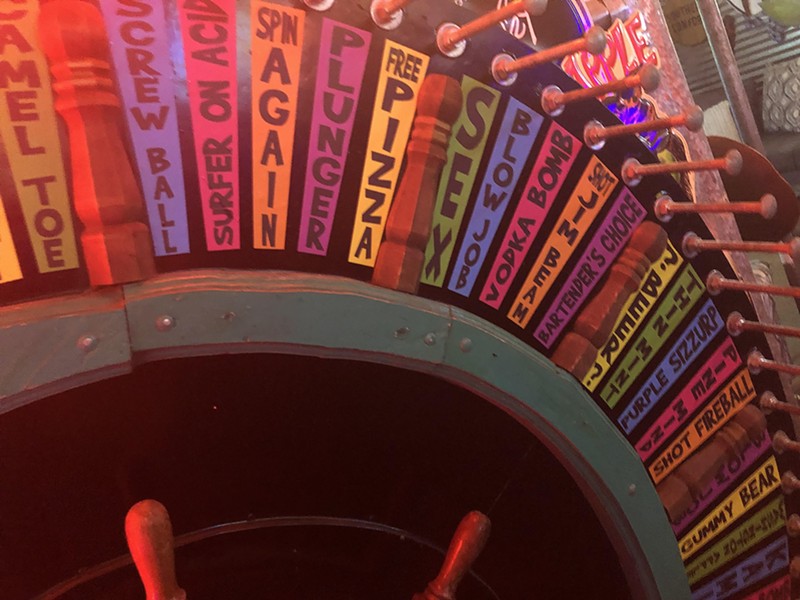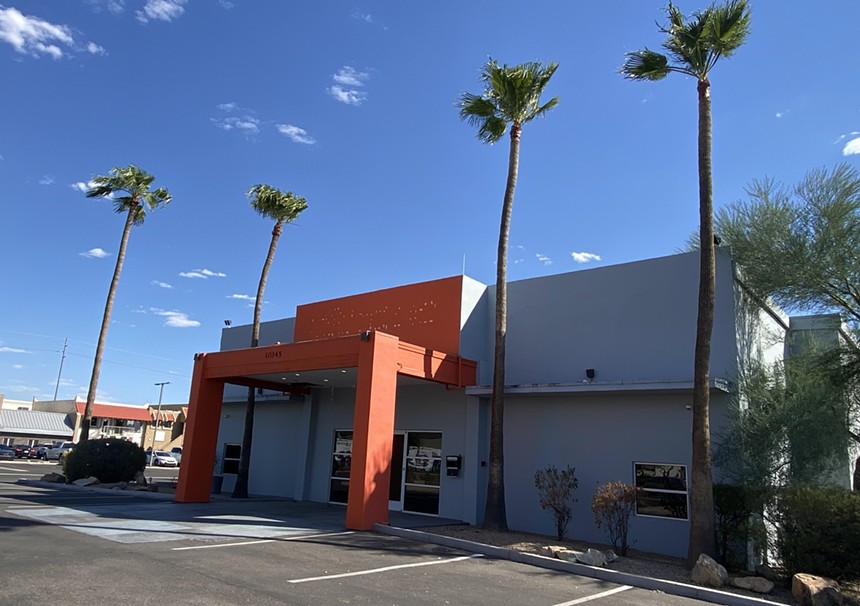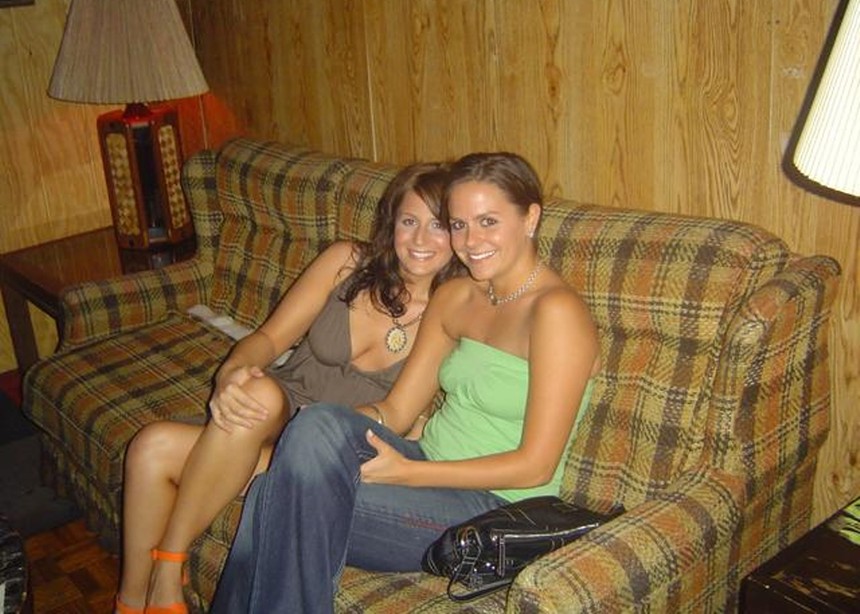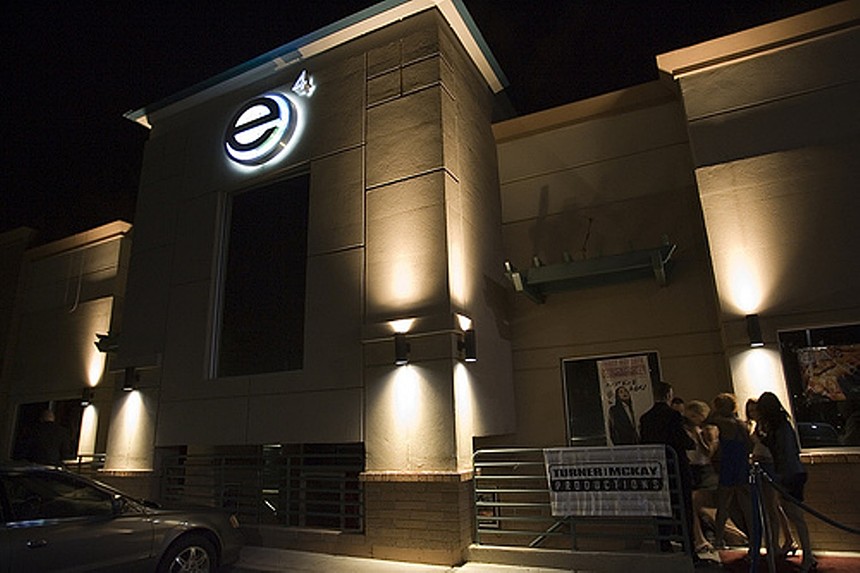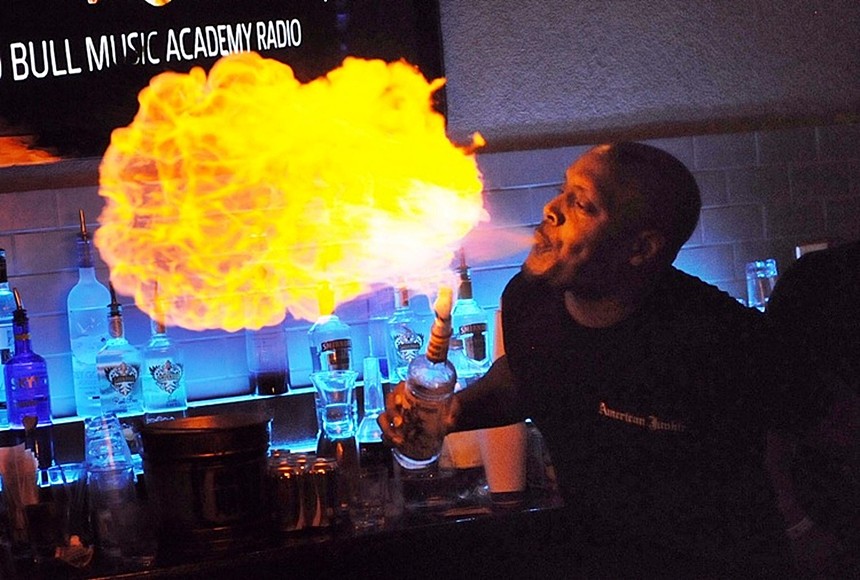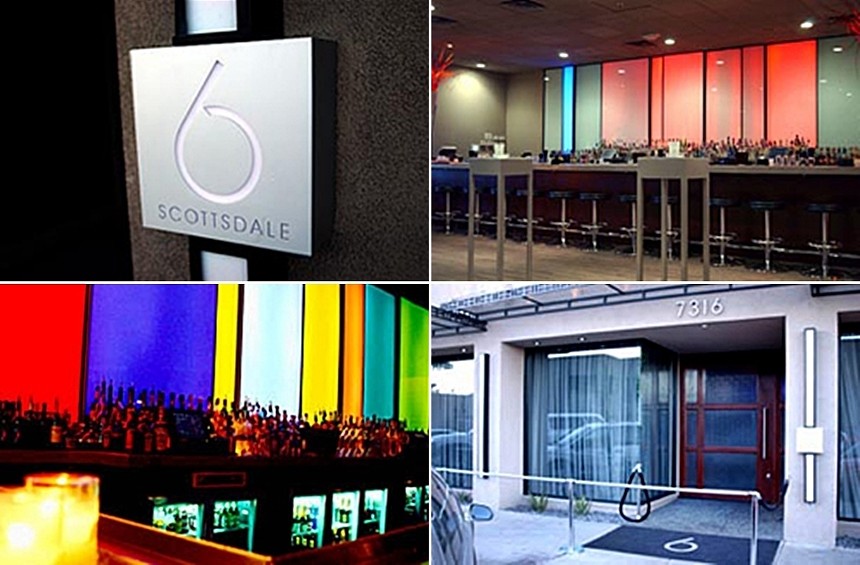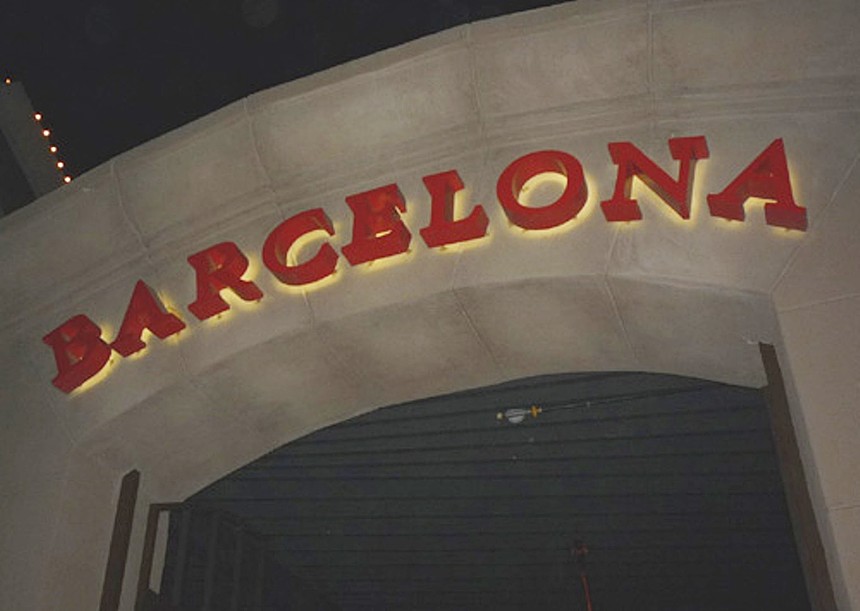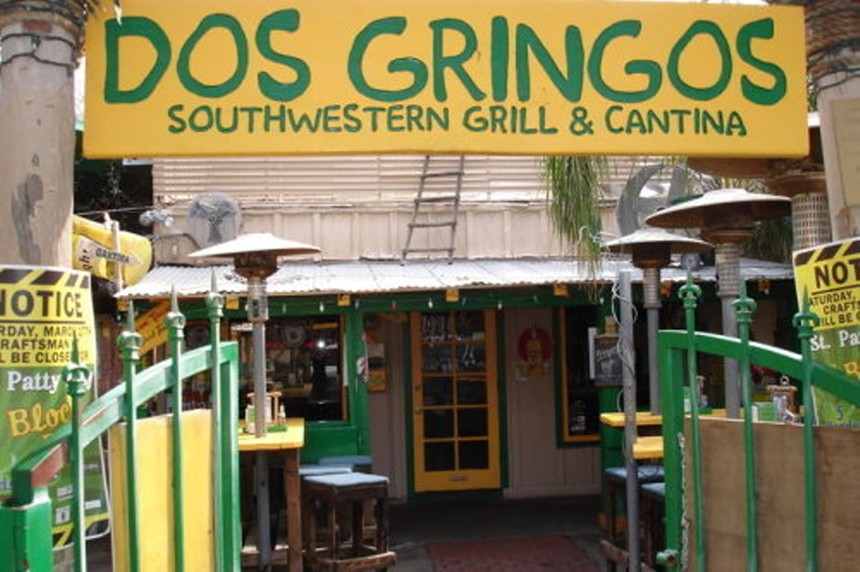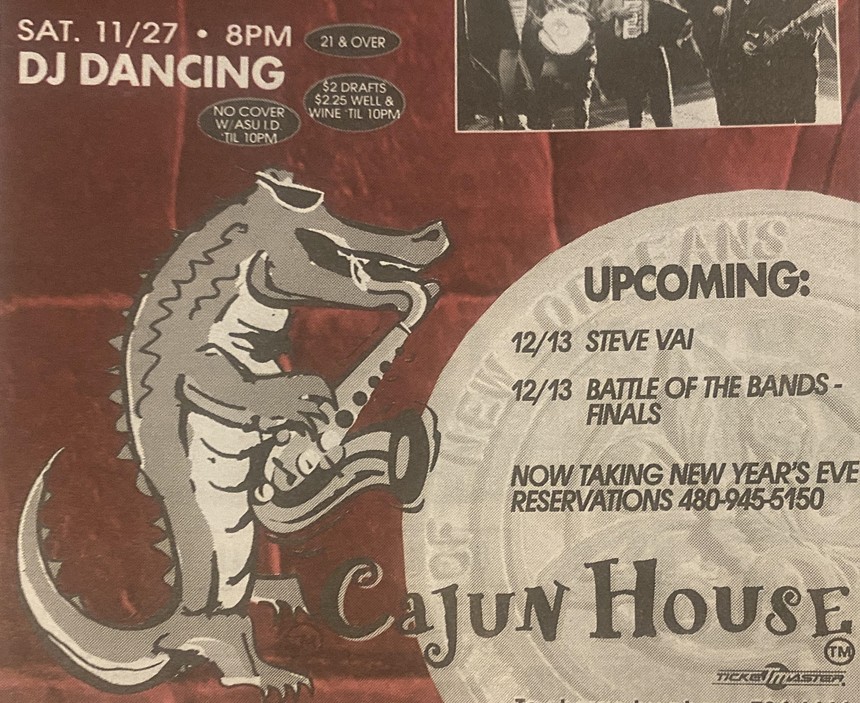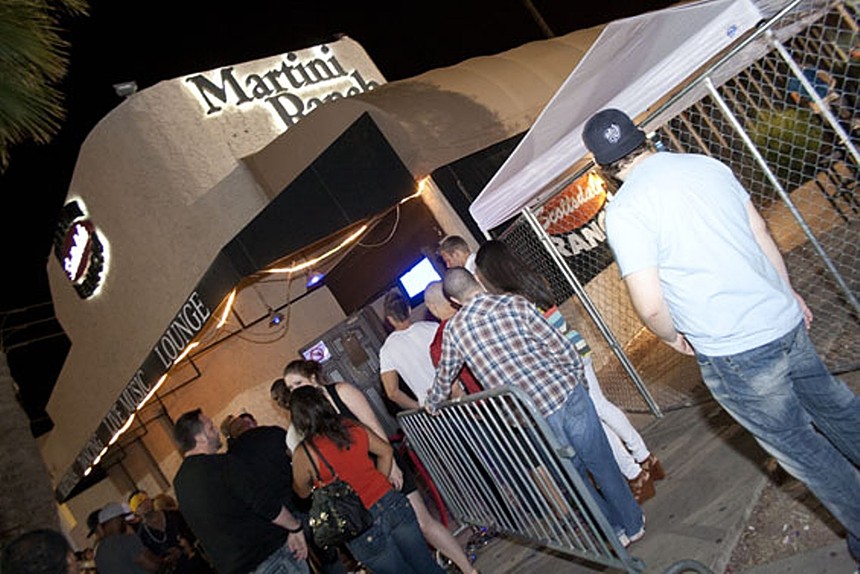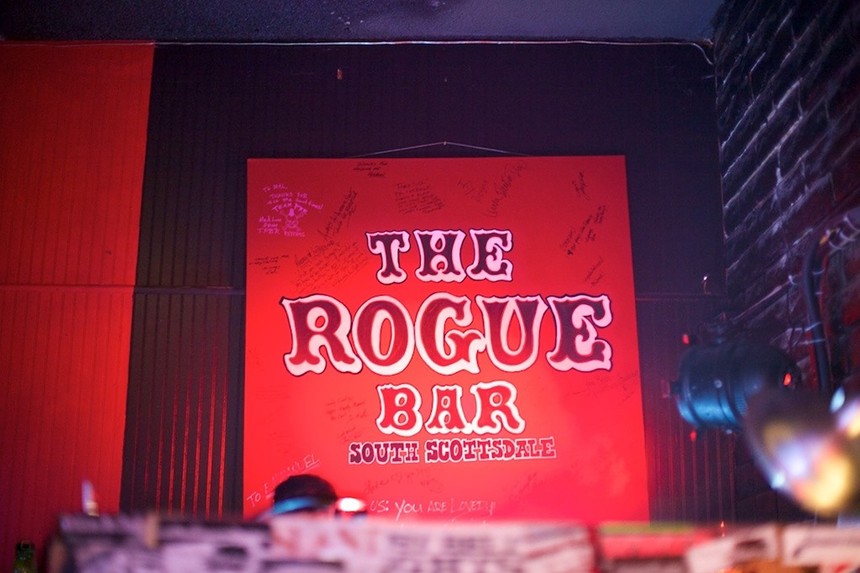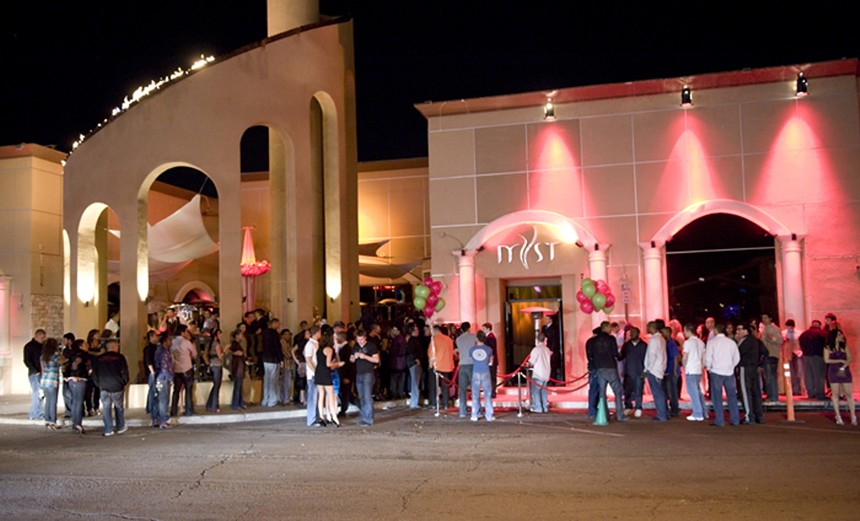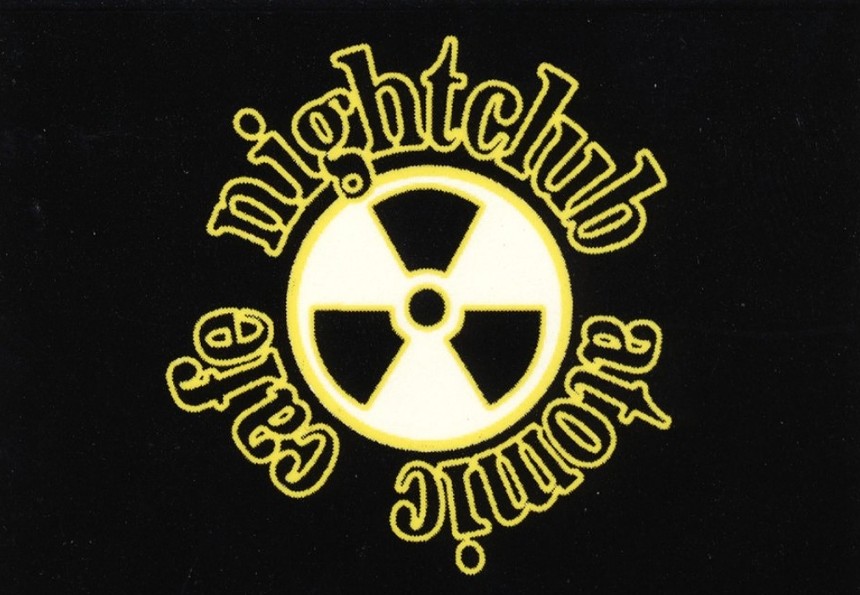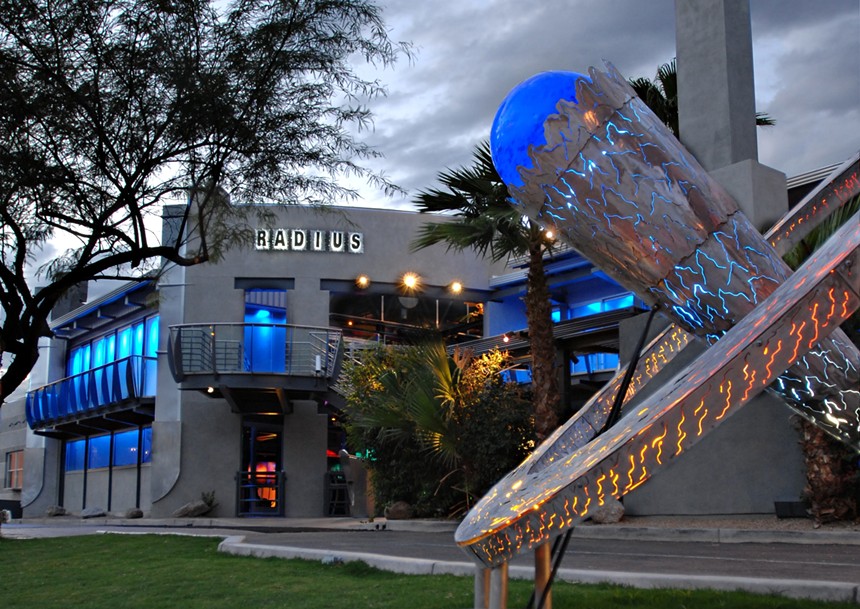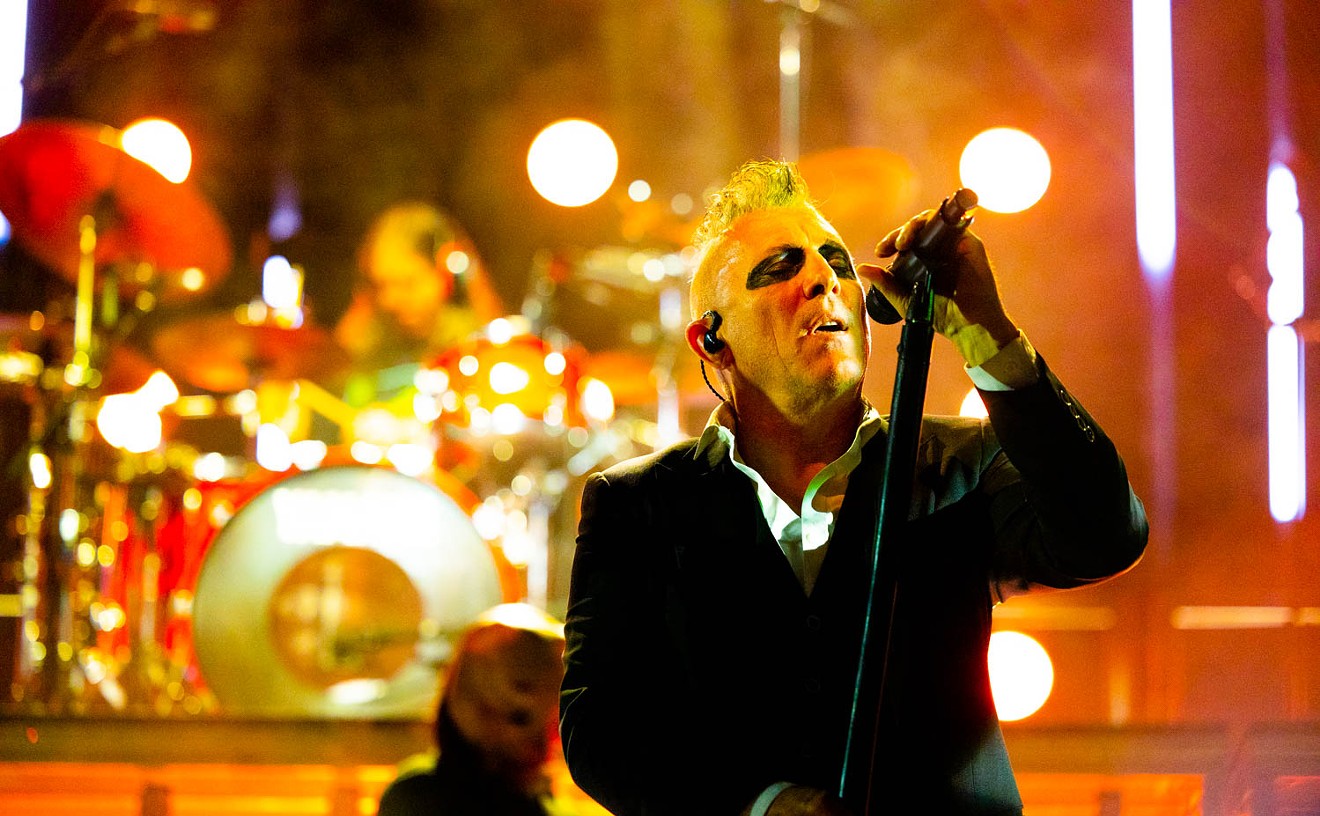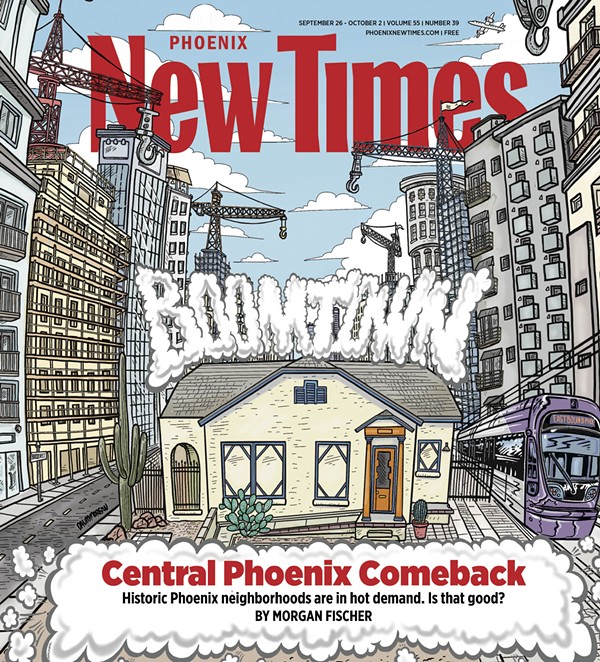Scottsdale’s after-dark scene has evolved significantly over the past three decades, with generations of nightspots rising, thriving, and eventually fading away. From the iconic clubs of the early ‘90s, like the infamous after-hours spot The Works or celebrity hangouts Jetz and Stix, to the nightclub boom of the late ‘90s and early 2000s, when Axis-Radius, Myst, SIX Lounge and other hotspots dominated the scene.
The Entertainment District has continually reinvented itself, ushering in the current era of hotspots like Maya Dayclub, Riot House, and Bottled Blonde. New venues, such as Mother Tucker’s Tavern, which debuted earlier this month, continue to emerge.
Here’s a nostalgic look back at some of Scottsdale’s legendary bars, clubs, and concert venues from the past 30-plus years.
Sugar Daddy’s
3102 N. Scottsdale Road, ScottsdaleCurrently: Oregano’sOnce upon a time, the Dos Gringos nightlife empire was booming. In the early 2000s, the Mexican beach bar chain operated multiple east Valley locations, a Tempe dive called Joe’s Apartment and New Orleans-themed spot Sugar Daddy’s. Described as “Old Town Scottsdale meets Bourbon Street,” it had artsy vibes and a French Quarter feel but borrowed heavily from the House of Blues chain, from its burning heart logo to hosting R&B/blues gigs. The bar went downhill in the mid-to-late 2000s and was sold in 2007 to new owners, who allegedly financed the purchase by fleecing Arizona mystery novelist Sylvia Nobel. Sugar Daddy’s closed in 2009.
Buzz: The Original Funbar
10345 N. Scottsdale Road, ScottsdaleCurrently: VacantBuzz was a rarity in Scottsdale nightlife in the early 2000s: a club catering to the underage crowd. The 19,000-square-foot, two-level nightspot near Shea Boulevard and Scottsdale Road opened in 1997 as an upscale venue with a downstairs dance floor and an upstairs lounge. It quickly became a hotspot for 18-and-over party monsters and often stayed open until 4 a.m. For years, Buzz cornered the market on underage dancing, but their success didn’t last. Around the time of the Great Recession, other Tempe and Scottsdale clubs began introducing their own 18-plus nights, cutting into Buzz’s business. Combined with other financial troubles, the club experienced the ultimate buzzkill and permanently closed in 2009.
Mickey's Hangover
4310 N. Brown Ave., ScottsdaleCurrently: Social Tap ScottsdaleThe partying at Mickey’s Hangover didn’t stop at last call. During the 2000s, the late-night dive near Stetson Drive and Brown Avenue stayed open until 3 a.m., drawing in the after-hours crowd and anyone looking to soak up excess booze with greasy eats. The brainchild of Randy Smith, the nightclub entrepreneur behind Scottsdale’s swanky Six Lounge, Mickey’s served cheap drinks, a soundtrack of ‘70s classics and indie bangers, a tongue-in-cheek white-trash vibe, and thrift-store décor with mismatched furniture and olive-and-orange drapes. In 2009, it was one of many Scottsdale spots to go under in the wake of the Great Recession. A dance club, sports bar, and lounge called Firehouse took over the property in 2011, keeping Mickey’s after-hours spirit alive by staying open until 4 a.m. on weekends, but it only lasted three years.
e4/Afterlife
4282 N. Drinkwater Blvd., ScottsdaleCurrently: VacantCreated by Scottsdale nightlife entrepreneur Aron Mezo, e4 opened in 2005 and featured four distinct themed clubs under one roof, each inspired by the four primary elements. The 5,000-square-foot establishment was one of Scottsdale’s more unique clubs at the time due to its setup and atmosphere. Patrons could inhale vaporized cocktails on the “air” patio, dance amid H2O-inspired décor and bubble-filled columns in the “water” room, walk on the wild side in the “fire” room’s medieval dungeon or relax in the “earth” room’s surrealistic subterranean grotto lounge. Following the loss of its liquor license in 2008, e4 transformed into an 18-and-over after-hours spot called Afterlife with a similar setup and frequent costume parties. It closed in 2013 after Mezo was unable to reach a lease agreement with the new property owner, and it has remained vacant ever since.
Suede Restaurant & Lounge
7333 E. Indian Plaza, ScottsdaleCurrently: Maya DayclubIn 2001, Scottsdale restaurateurs and nightlife impresarios Les and Diane Corieri unveiled this ultra-lounge across the street from Axis-Radius with style to spare. Plush padded walls, sleek cherry wood and two lavish bars illuminated with teardrop lights and neon ice strips were among the high-styled amenities of the 3,500-square-foot space, which quickly became a hotspot for its upwardly mobile clientele. The sound system was also state-of-the-art and was used by its resident DJs — including such Scottsdale club veterans as J. Alan, MCB, Freddy “Circle” Krems and Kevin Brown — during weekly affairs and memorable dance events like the annual Ghost Ball block party. Suede endured for more than a decade, surviving recessions and the ever-fickle whims of the Scottsdale scene, before closing in 2012 when the entire block was redeveloped into Maya Dayclub.
American Junkie
4363 N. 75th St.Currently: The Hot ChickAmerican Junkie was a fixture on the eastern edge of Scottsdale's Entertainment District, built for rowdy fun. Launched in 2008 by the same team behind Pussycat Lounge and Dirty Pretty, it served as a sports bar Mecca by day, with screens encircling its central bar and strategically placed throughout the venue for easy viewing. At night, it transformed into a dance club and haven for partiers, with DJs spinning several nights a week and a bustling outdoor patio full of patrons engaged in conversation and other social rituals. Its collection of vintage concert posters added a rock ‘n’ roll edge, reinforcing the venue’s raucous vibe. After being sold to new owners and undergoing a remodel, it closed in September 2014. The building is now home to The Hot Chick, which offers its own brand of high-energy fun, including arcade games, block parties and drag bingo sessions.
SIX Lounge
7316 E. Stetson Drive, ScottsdaleCurrently: Sola SalonsYears before Randy Smith co-founded the cannabis dispensary chain Sunday Goods, the local entrepreneur introduced the ultra-lounge concept to Scottsdale in 2001 with SIX. The exclusive Stetson Drive spot boasted a neon ambiance, model-quality servers, luxe libations, and unique features like a unisex bathroom with glass doors that turned opaque when closed. Lauded as one of the top bars in the U.S. by Esquire, InStyle and Elle, SIX became one of Scottsdale’s premier “see and be seen” spots in the early to mid-2000s. Celebrities were regular visitors and the lounge hosted A-list parties and spin sessions by the Valley’s best DJs. The good times didn’t last, though. A combination of the Great Recession, increased competition in Scottsdale’s Entertainment District, and SIX’s declining popularity led to financial shortfalls for Smith, ultimately resulting in its closure in 2009 after a rent dispute with the property’s owner. The 5,000-square-foot space later hosted two other lounge concepts, Red Revolver and Ellure, but neither matched the success of SIX.
BS West
7125 E. Fifth Ave., ScottsdaleCurrently: VacantWhen BS West announced its closure earlier this year, it was the final chapter of one of the Valley’s longest-running LGBTQ+ establishments. First opened in 1988, the two-story bar, dance joint and drag club just off Craftsman Court was a nightlife haven and safe space for everyone regardless of sexual orientation or gender identity. All were welcome at BS West. (As the New Times noted in 2005, “BS West is absolutely one of the friendliest clubs you'll ever party at, whether you're bi, gay, straight, or none of the above.”) It was also a lively spot with events throughout the week, including dance parties, go-go boy nights, drag shows and other fun. The closure of this LGBTQ+ institution is a definite loss for the community. And that’s no B.S.
Barcelona
15440 N. Greenway Hayden Loop, ScottsdaleCurrently: IMT North Scottsdale Owned by local car wash magnate Danny Hendon, Barcelona was a 19,000-square-foot upscale restaurant and nightclub described by Phoenix New Times as a "sprawling Scottsdale party palace," with space for 450 people, multiple bars and a large stage and dance floor. Barcelona’s décor and menu blended Mediterranean and Spanish influences, but its weekend entertainment was pure Vegas glitz. As we described in 2005, each night started off with dinner before the real action began. “After 10 p.m., someone pushes a button, the dance floor is cleared of tables, video projection screens descend and all the hot twenty- and thirtysomethings begin streaming in, preparing for the high-energy, club scene that shifts into overdrive once the bootylicious house band Zowie Bowie hits the stage.” Barcelona catered to a boomer crowd and had a large following. It closed in June 2009 with plans to renovate and relaunch under a new concept, but it never reopened. Five years later, owner Danny Hendon was convicted of illegal hiring practices and sentenced to a year in federal prison.
Dos Gringos
4209 N. Craftsman Court, ScottsdaleCurrently: Pour Decisions The original location of Dos Gringos opened along Scottsdale’s Craftsman Court in 1996 and quickly became a local favorite. Envisioned by founder Brian Roerich as a laidback Rocky Point-style beach cantina, Dos Gringos featured a vibrant and unpretentious atmosphere. Its cheap cerveza, indoor and outdoor bars, humorous vibe, DJ nights and expansive open-air patio quickly made it popular among clubgoers and the college crowd. Roerich, who reportedly mortgaged his house and maxed out his credit cards to start Dos Gringos, later leveraged its success to open a second location near Arizona State University and build a mini-empire of theme bars, including Sugar Daddy’s in Scottsdale and Joe’s Apartment in Tempe. By 2009, most venues, including the original Dos Gringos, had been sold or closed, coinciding with Roerich's two-year federal prison sentence for tax evasion. The Scottsdale location remained largely unchanged for six years, despite fluctuations in popularity. In 2015, the Chicago-based restaurant group GHFH purchased and remodeled the bar, reopening as Old Town Gringos the following year.
Giligin's
4251 N. Winfield Scott Plaza, ScottsdaleCurrently still operating Subtlety has never been Giligin's style. This island-themed bar has gleefully gone all-out pushing the boundaries of good taste and staging lowbrow gags since its debut in 1995. (Case in point: Prior to the pandemic, it had a pint-sized “midget bar” staffed by little people.) Giligin's embraces its over-the-top and tongue-in-cheek spirit with gusto, with a framed letter from PETA protesting its goldfish races on display, glutinous solo eating challenges (read: finishing a family-sized bag of Totino’s pizza rolls in 30 minutes) on the menu, and $2 mystery beers. Excess amounts of alcohol helps keep the gonzo mood going at Giligin’s, of which it has an ample supply (three entire walls are devoted to floor-to-ceiling shelves of liquor bottles). Giligin's is one of the few nightspots in this list that’s still around and will likely be around for years to come. No joke.
Cajun House/Venue of Scottsdale
7117 E. Third Ave., ScottsdaleCurrently: Vacant Scottsdale nightlife has always been to go all-out and over-the-top, which the creators of Cajun House did when building the $8 million concert hall and theme restaurant in the mid-1990s. The 25,000-square-foot property inspired by the French Quarter in New Orleans boasted four levels, multiple bars, a coffeehouse, a bayou with “snapping gators,” a billiards gallery and other amenities. It’s cavernous main room was a recreation of Bourbon Street, complete with cobblestone flooring. The list of bands and musicians who played Cajun House over the next decade was suitably big, including Big Bad Voodoo Daddy, Semisonic, Cheap Trick, The Black Crowes, Joe Strummer, They Might Be Giants, Ben Folds, Wilco, Guttermouth, Todd Rundgren and Iggy Pop. In 2016, Cajun House’s longtime owner renamed the property Venue of Scottsdale and began renting it out for more general events. By 2016, it became just The Venue and ditched all of its N’awlins kitsch before going out of business entirely three years later.
Martini Ranch
7295 E. Stetson Dr., ScottsdaleCurrently: Wasted Grain Martini Ranch was a staple of Scottsdale nightlife and a go-to spot for drinking and partying for almost two decades. It’s best remembered as a live music haven, a role it embraced almost from the jump. After starting out as strictly a bar and grill in 1994, Martini Ranch began hosting performances almost immediately, first with cover acts and then segueing to prominent local bands and touring artists. Martini Ranch's main room operated as a mid-sized venue for hosting a "who's who" of emerging talents. (Bruno Mars and Adele, for instance, both played Martini Ranch prior to their breakout success). Notable names and legendary bands who gigged there over the years included Avril Lavigne, Eagles of Death Metal, LMFAO, Kings of Leon, Grace Potter, Shiny Toy Guns, Garbage, Cypress Hill and 30 Seconds to Mars. From 2000 onward, it became a dance music haven after its owners converted a second-floor office space into a lounge called the Shaker Room, which functioned as a “club within a club.”
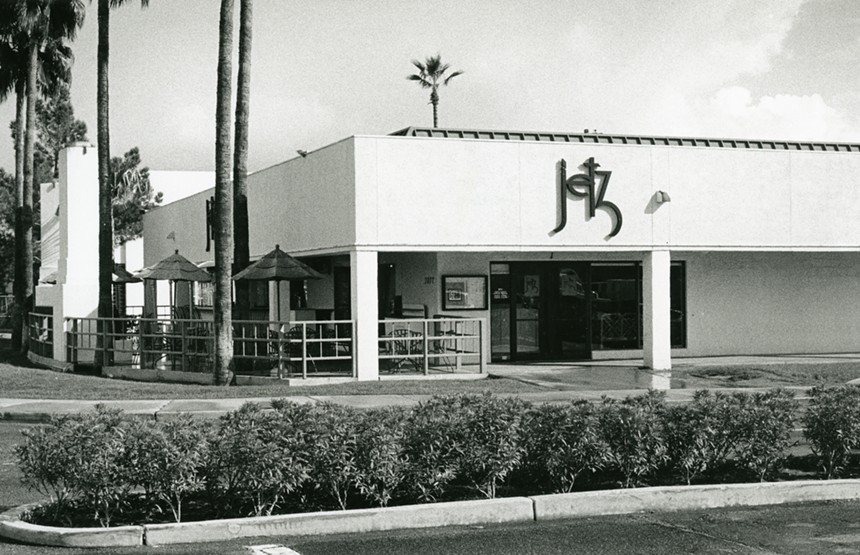
An undated photo of now-demolished Scottsdale restaurant and bar Jetz.
Scottsdale Historical Society/Scottsdale Public Library
Jetz and Stixx
7077 E. Camelback Road, ScottsdaleCurrently: Nordstrom In 1992, Scottsdale nightlife impresario Les Corieri partnered with developer Mark Drinkwater to create Jetz, a high-energy restaurant and bar, at the now-demolished Camelback Mall. The following year, they opened a neighboring pool hall and nightspot called Stixx. Both featured local DJs like Z-Trip in the mix and famous names rolling through. "Jetz and Stixx, at the time, were two of the hottest clubs in Arizona,” Z-Trip told New Times earlier this year. “I remember Barkley and Tiger Woods coming in and they’d bring everybody. All the bottle service stuff was brewing at the time. And they'd come to the clubs and we'd play music for them.” Despite their popularity, Jetz and Stixx were on borrowed time. In the mid-'90s, local developers set their sights on Camelback Mall as a potential component of the multimillion-dollar Scottsdale Waterfront project, which would create high-end retail and living spaces south of Camelback Road along the Arizona Canal. Corieri and Drinkwater engaged in legal battles with developers and began looking for somewhere nearby to open a new place, which ended up being iconic club Axis-Radius.
The Rogue Bar
423 N. Scottsdale Road, ScottsdaleCurrently: Blue Buddha CollectiveThe Rogue Bar was a beloved local music and nightlife institution for 19-plus years. A gloriously funky dive tucked into a south Scottsdale strip mall, it boasted an 80-person capacity, a sizable stage, an excellent sound system, graffiti-covered bathrooms, cool owners, murals of rock stars and plenty of heart. It began life in 2001 when local entrepreneur Mark Maertens transformed punk-friendly bar Sneaky Pete's into The Rogue. Five years later, he sold the joint to the late Manny Tripodis, who continued its legacy. Throughout its lifespan, Rogue Bar hosted memorable events aplenty: concerts by touring indie tastemakers and rock bands. Dance nights ranging from William Reed’s shindig Shake! to fetish-friendly affairs like Cupcake!. Tripodis also tirelessly championed the Valley’s music scene, regularly booking both emerging and established local acts. When Rogue Bar closed in 2019, he stated, “I’m proud of the things we’ve accomplished.”
Sanctuary/Myst
7340 E. Shoeman Lane, ScottsdaleCurrently: Maya DayclubWhen Sanctuary debuted in August 1999, New Times described the hype surrounding the 14,000-square-foot nightclub as “amazingly intense.” Owners Shawn Yari and Richard Kohan, the duo behind the upscale mid-’90s Phoenix spot Empire, didn’t skimp on stylish touches. Its exterior featured French Moroccan and Casablanca-inspired elements and a 200-year-old wooden entryway from a monastery in India. Within Sanctuary were seven different areas, including a dance floor with raised platforms, various theme rooms, a “Divine Lounge” and a VIP area. Four years later, the club was purchased by Scottsdale nightlife power couple Les and Diane Corieri, who rechristened it Myst and gave the property a makeover. It hosted drinking, dancing and DJ sets until it was torn down in 2012 to make way for Maya Dayclub.
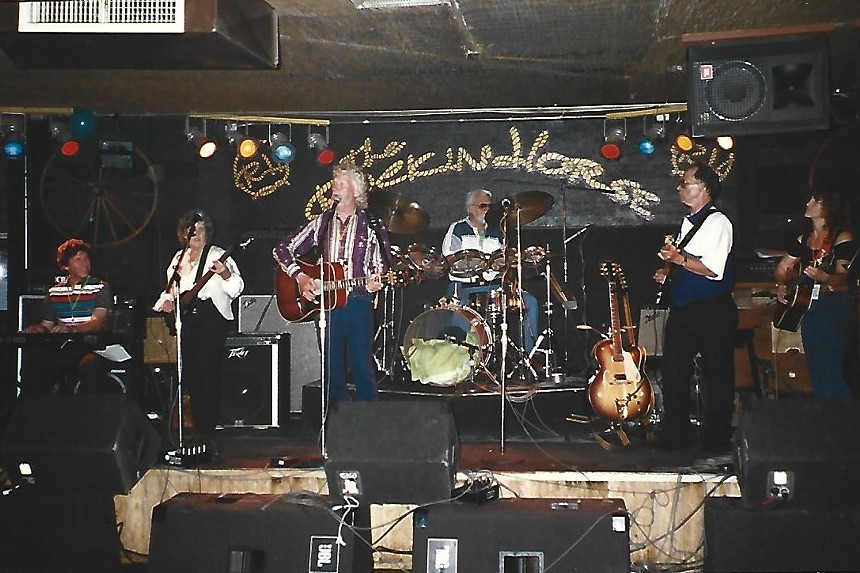
Buddy Long, center-left, performs at The Rockin' Horse during DJ Johnny D's 50th birthday in May 1996.
John Dixon
The Rockin’ Horse Saloon
7000 E. Indian School Rd., ScottsdaleCurrently: David E. Adler Fine Rugs The “West’s Most Western Town” has been home to several memorable cowboy and country music joints over the years. Back in 1991, entrepreneur Tucker Woodbury gave it an “Austin-esque roadhouse” called The Rockin’ Horse Saloon. Located across the street from the equally rustic Coach House, the 5,500-square-foot honky-tonk showcased country, Americana, roots-rock, alt-country and rockabilly artists. “It was a really cool venue,” Woodbury told New Times in 2013. “We did country on weekends and then programmed it with nationals. Brought in everybody from Son Volt, Wilco, Joe Ely, Michelle Shocked … all these really great bands.” (Local acts like The Hoo Doo Kings, Flathead, Hans Olson, Kings of Pleasure, Steven Ashbrook and Chico Chism also graced its stage.) Woodburtalso met Charlie Levy through The Rockin’ Horse after the local concert promoter booked a Barenaked Ladies show in 1992. (Decades later, they’d collaborate on downtown Phoenix’s Crescent Ballroom, Valley Bar and The Van Buren.) The Rockin’ Horse met an unfortunate end in June 1996 when an exploding pressure cooker ignited a fire that destroyed the venue. Within days, Woodbury found a new home on Stetson Drive and reopened later that year. He parted ways with the venue in 1998.
The Atomic Cafe
8005 E. Roosevelt St., ScottsdaleCurrently: Pub Rock Live People who were into industrial, goth music and other genres of a dark and noisy nature found a place to belong at The Atomic Cafe, the south Scottsdale rock club that operated in the mid-to-late ‘90s. Owned by the late Randall Goodwin (a.k.a. DJ Randall), it was not only a wayward home for local rivetheads and goths, as well as rock fans. The club hosted concerts and dance parties on the regular and former patrons of the venue say Goodwin, who DJ’d at such legendary bars as Planet Earth in Scottsdale and The Asylum in Tempe prior to opening The Atomic Cafe, was open to many kinds of music, regardless of genre. "The Atomic Cafe had industrial nights, they had pure goth nights, they ran he whole gamut of the alternative/dark/underground scene,” Alexander Aeternum told New Times in 2014. “There were nights for every sub-genre.” In 1997, Randall opened a second Atomic Cafe in Austin, but closed Scottsdale’s version in 1998. The property was sold to Jason Olson, who transformed it into hard rock haven Chasers. Randall died in 1999.
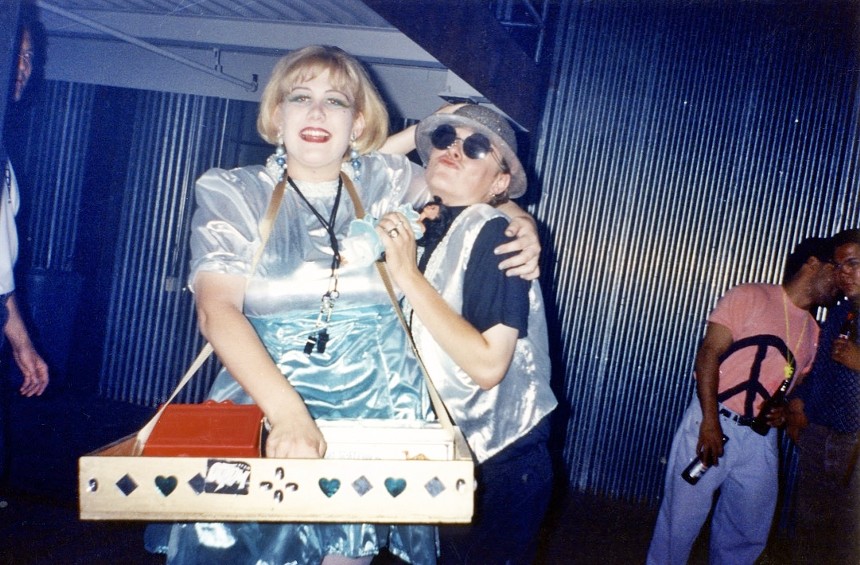
Local club kids Miss Coco (left) and Danny Damage, both of whom were regulars at infamous Scottsdale nightspot The Works.
Steven Rogers
The Works
7223 E. Second St., ScottsdaleCurrently: HonorHealth Greenbaum Surgical Specialty Hospital The Works was ahead of its time. The infamous Scottsdale dance club that operated in the early ‘90s was a trendsetting and groundbreaking establishment that was a hangout for local club kids and electronic dance music fans, a destination for LGBTQ+ partygoers and a safe space for weirdos and outcasts. They all came to dance, party and go wild. Co-created by local nightlife guru Steve Rogers and onetime business partner Greg Walker, The Works debuted in 1992 and quickly tapped into the Valley's rave, nightlife and countercultural scenes. It hosted all drag shows, costume parties and after-hours marathon dance sessions. Big-name EDM talents of the era performed at the club when they passed through the Valley, including Moby, The Prodigy, John Acquaviva and Richie Hawtin. Meanwhile, The Works was helping launch the careers for two of its residents, future DJ superstars Eddie Amador and Markus Schulz. Throughout its five-year run, The Works was frequently visited by Scottsdale Police due to incidents outside the club, including two shootings between 1994 and 1996. These events likely contributed to the landlord's decision not to renew the lease, which expired in 1997 and caused The Works to close.
Axis-Radius
7340 E. Indian PlazaCurrently: Bottled Blonde, Casa Amigos and Skylanes This dual nightclub was a party playground and dance destination for countless clubgoers, serving as one of the more influential and landmark spots in Scottsdale. Axis arrived first, opening as a cigar and martini joint in 1997, while neighboring dance club Radius followed two years later. Both venues became havens for the bottle-popping crowd, offering a vibrant atmosphere for drinking and dancing. They also attracted celebrities and professional athletes and hosted performances by hundreds of DJs and EDM artists, both locally and nationally known. Axis-Radius allowed owners Les and Diane Corieri to expand their expanding empire of local bars, restaurants and nightlife venues, it also helped shape Scottsdale's Entertainment District. Its success paved the way for the area's transformation into a bustling nightlife hub, setting the stage for the vibrant party scene that’s existed for decades. Axis-Radius closed in 2013, becoming beer garden Bottled Blonde and now-defunct concert venue Livewire, but the club is still remembered for its influence and impact on Scottsdale.

